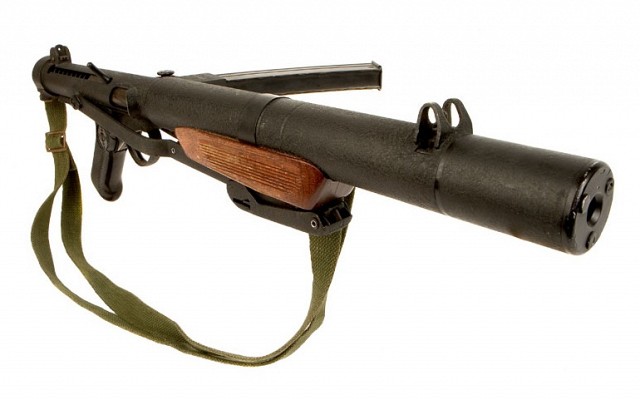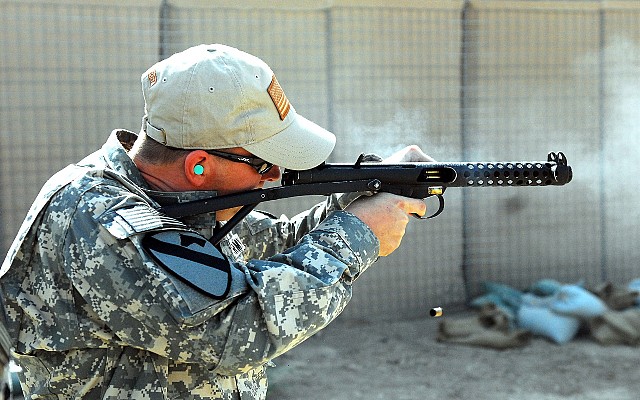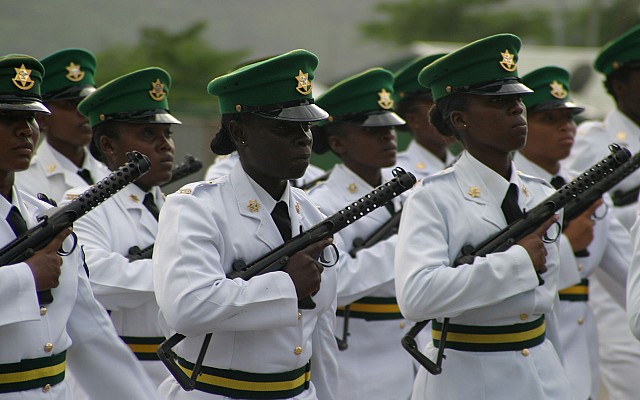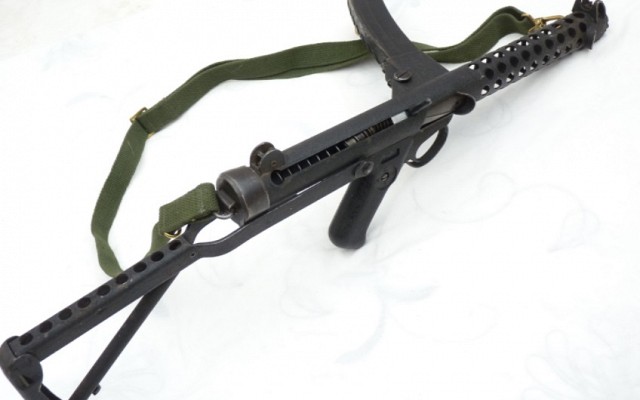Sterling
Overview
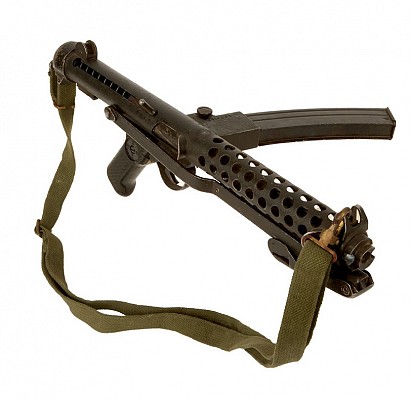
Sterling Mk 4
Top view of Sterling Mk4 sub machine gun with stock collapsed underneath the barrel.
Source: www.deactivated-guns.co.uk -
© Copyright lies with original owner
1966 - 1985 (Mk 5)
1977 - ? (India)
United Kingdom - Royal Ordnance Factores, Fazakerly
Canada - Canadian Arsenals Limited
India - Indian Ordnance Factories, Kanpur
L2A3 (UK designation for Mk 4)
L34A1 (UK designation for Mk 5)
C1 (Canadian designation)
Carbine 1A (Indian designation for Mk 4)
Carbine 2A1 (Indian designation for Mk 5)
Description
Introduction
The Sterling is a sub machine gun that was designed in the United Kingdom after World War 2. The Sterling started its life as the Patchet Machine Carbine. The design was initiated at the end of World War 2. It was to replace the cheap Sten with a more accurate high quality weapon.
Design
The Sterling has very distinct looks with the curved magazine that is inserted sideways. The bolt has spiral grooves that collect dirt within the weapon, making it very reliable for a blowback weapon. The Sterling also is one of the few sub machine guns that can mount a bayonet.
Firepower
The Sterling fires the 9x19mm Parabellum round from a 34 round magazine. Most versions, including the ubiquitous Mk 4, are select fire weapons firing from an open bolt. Semi-automatic versions fire from a closed bolt for increased accuracy. Even though it is a very simple weapon it is known to be accurate and reliable.
Users
The Sterling was used by most Commonwealth forces and exported to over 70 nations. Many countries have replaced the Sterling with more modern designs or assault rifles. However, the Sterling still remains in active service in various nations.
Variants
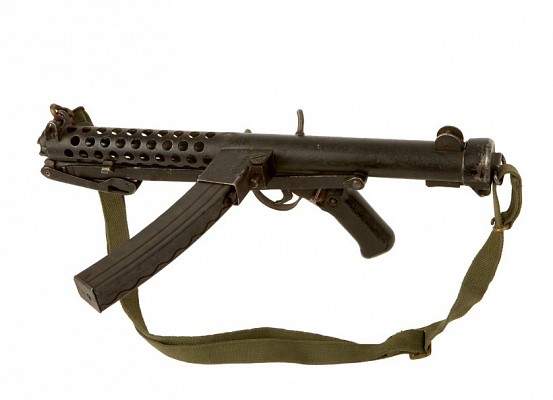
Sterling Mk 4
The Mk 4 is the most widely produced variant of the Sterling family of sub machine guns. The Mk 4 is known in British service as the L2A3. The Mk 2 (L2A1) and Mk 3 (L2A2) were batches with subsequent improvements until the design finally settled on the Mk 4 in 1956. The Mk 6 is a special semi-automatic police carbine that fires from the closed bolt position.
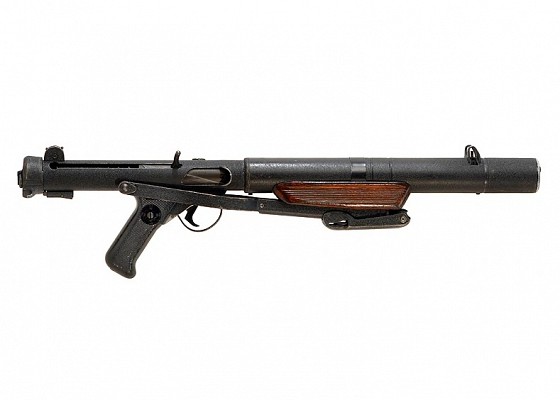
Sterling Mk 5
The Sterling Mk 5 was adopted as the L34A1 in British service in 1966. The Mk 5 is a silenced variant dedicated for special operations personnel. The barrel within the integrated silencer has 72 radial holes. This allows the Mk 5 to use standard 9x19mm ammunition instead of special subsonic ammunition. It is intended to be fired semi-automatic, but can fire fully automatic if necessary.
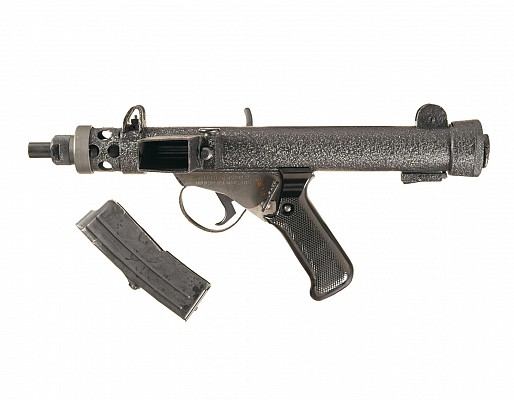
Sterling Para-pistol
The Sterling Mk 7 was developed for paratroopers and is a very rare weapon. The Mk 7A is a select fire weapon that fires from an open bolt position. The Mk 7C is fitted a semi-automatic weapon that is more accurate since it has a much longer barrel and fires from the closed bolt position.
Details
Media
Related articles
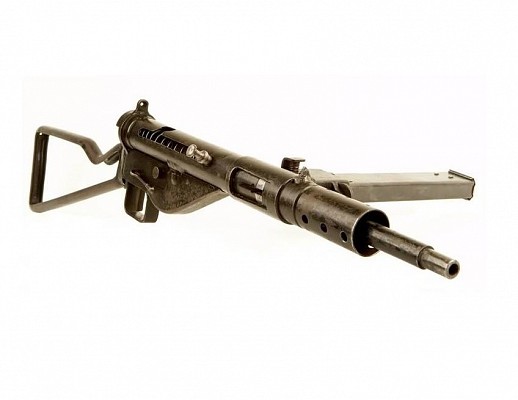
Sten
The Sterling replaced the World War 2 era Sten sub machine gun. The Sterling is of a much higher quality level than the Sten, which was produced as cheaply as possible.

